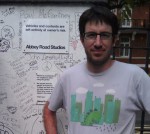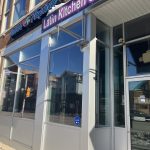Two Amazon HQ2 Cities?
All the city news you can use.
Want more links to read? Visit The Overhead Wire and signup. Every day at The Overhead Wire we sort through over 1,500 news items about cities and share the best ones with our email list. At the end of the week, we take some of the most popular stories and share them with Urban Milwaukee readers. They are national (or international) links, sometimes entertaining and sometimes absurd, but hopefully useful.
Companies creating closed systems for transportation: A walled garden is a technology platform that limits options available to a user to that specific platform. Some famous examples include Amazon’s Kindle or Apple’s App Store. David Zipper argues there is a real danger of limiting transportation choice when companies such as TNCs create walled gardens that might push out other options such as public transport. (David Zipper | Fast Company)
Ride hailing totals in Seattle revealed: Ride hailing companies are notorious for hiding thier numbers but new information from Seattle show how many trips they are providing in cities. Two of the largest companies, Uber and Lyft provide on average 91,000 rides per day in King County, up from 25,000 trips in 2015. Other transportation systems in the region such as light rail carry 77,000 trips per day. The interesting part is that over 50% of these rides originate in the zip codes that make up downtown. (David Gutman | Seattle Times)
Scooters a test for future funding mechanisms: Many cities that have seen an influx of electric scooters in cities have developed systems for charging them to use public streets and sidewalks in addition to administration of the programs. Current schemes can be modeled after what cities charge restaurants for sidewalk seating. But this initial test of pricing could lead to the future pricing of roads used by cars and perhaps autonomous vehicles. (Aarian Marshall | Wired Magazine)
Making defensive architecture more inviting: Bollards are often put in front of buildings for defense against vehicle based terrorist attacks. But they can be ugly and less than inviting for urban streetscapes premised on being open. Architect Beatriz Pero Giannini thinks he has a solution, create a see-saw like system for the top of the bollards that invites people to sit together and create positive interactions. (Katharine Schwab | Fast Company)
Amazon’s search for a second headquarters split: After months of speculation a new report from the Wall Street Journal has found that Amazon will be choosing more than one place for the location of thier next headquarters in addition to thier current space in Seattle. Current projections are for Crystal City in the DC area and Long Island City in New York. This revalation has promted think pieces and commentary from Brookings, Rolling Stone, and even one from the New York Times on “Superstar Cities”. (Gaby Del Valle | Vox)
Quote of the Week
I feel a lot of the discussions around transit take as its major metric of success the opening of new rail lines. I think the definition of ‘success’ is you made a network that makes it easy to get around the city.
–Christof Spieler in Wired talking about his new book Trains, Buses, People and the definition of successful transit.
This week on the podcast, Dr. Kari Watkins of Georgia Tech discusses the evolving transit experience and importance of dedicated lanes and real time data.
Want more links to read? Visit The Overhead Wire and signup. (http://dtrnsfr.us/2iA8Yas)
Transportation
-
Paris Rides to New Record
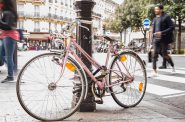 Oct 18th, 2025 by Jeff Wood
Oct 18th, 2025 by Jeff Wood
-
One Alderman’s Quest To Defund The Streetcar
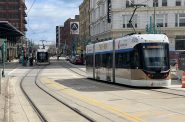 Oct 18th, 2025 by Jeramey Jannene
Oct 18th, 2025 by Jeramey Jannene
-
Public Meetings Upcoming On Possible I-794 Removal, Replacement
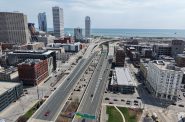 Oct 17th, 2025 by Jeramey Jannene
Oct 17th, 2025 by Jeramey Jannene
Urban Reads
-
Paris Rides to New Record
 Oct 18th, 2025 by Jeff Wood
Oct 18th, 2025 by Jeff Wood
-
Lack of Groundwater Supplies Halts Sprawl Growth in Phoenix Area
![Sprawl. Photo by David Shankbone (David Shankbone) [GFDL (http://www.gnu.org/copyleft/fdl.html) or CC-BY-SA-3.0 (http://creativecommons.org/licenses/by-sa/3.0/)], via Wikimedia Commons [ https://commons.wikimedia.org/wiki/File%3ASuburbia_by_David_Shankbone.jpg ]](https://urbanmilwaukee.com/wp-content/uploads/2017/10/1024px-Suburbia_by_David_Shankbone-185x122.jpg) Oct 12th, 2025 by Jeff Wood
Oct 12th, 2025 by Jeff Wood
-
Working Households Face Increasing Rent Burden
 Oct 5th, 2025 by Jeff Wood
Oct 5th, 2025 by Jeff Wood

